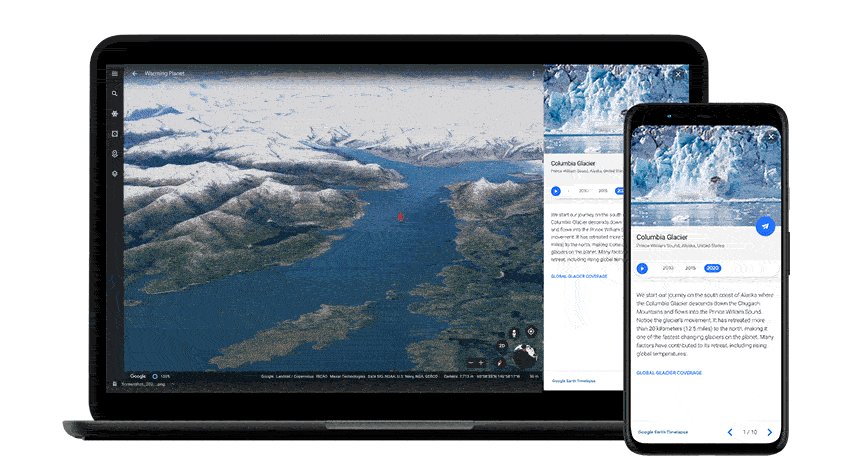Google Earth’s New Timelapse Feature Shows the Effects of Climate Change
Google has partnered with the CREATE Lab at Carnegie Mellon University to debut the biggest update to the Google Earth platform in years: a timelapse function that shows how much the Earth and its climate have changed between 1984 and 2021.
Google Earth launched as a way to look at different places on the planet through a 3D replica of the world. In a blog post, Google says that its goal with Google Earth was to feature the planet in “magnificent detail” with the goal of entertaining but also to empower people to make positive change, as the company outlined in a blog in July of 2020.
But as Laughing Squid reports, Google is taking that to the next level by adding a new dimension into the mix: time. Google says this is the biggest update that it has made to the platform since 2017 and uses data from 24 million satellite photos from the past 37 years compiled together into an interactive 4D experience.
Timelapse in Google Earth is the visual evidence of dynamic change on our planet from climate change and human behavior. Our hope is that it will be used to educate and inspire.
Check out https://t.co/PFPV1qhWXx to access 800+ ready-to-use videos to create your own stories. pic.twitter.com/p3wHAnWmqY
— Google Earth (@googleearth) April 15, 2021
“Now anyone can watch time unfold and witness nearly four decades of planetary change,” writes Rebecca Moore, the Director, Google Earth, Earth Engine and Outreach. “Our planet has seen rapid environmental change in the past half-century — more than any other point in human history… With Timelapse in Google Earth, we have a clearer picture of our changing planet right at our fingertips — one that shows not just problems but also solutions, as well as mesmerizingly beautiful natural phenomena that unfold over decades.”
Google Earth Timelapse can be accessed here, and the search bar allows you to choose any place on the planet that you wish to explore over time. Additionally, the tech giant has uploaded more than 800 timelapse videos in both 2D and 3D for public use here. Those videos can be used in their native MP4 state or watched on YouTube.
“As we looked at what was happening, five themes emerged: forest change, urban growth, warming temperatures, sources of energy, and our world’s fragile beauty. Google Earth takes you on a guided tour of each topic to better understand them,” Moore continues.

The Earth’s climate has been rapidly warming over the course of an astoundingly short period of time. As NASA shows, there is inarguable scientific evidence for the warming of Earth’s system. That evidence is “unequivocal.”
While the planet has gone through warming and cooling cycles over the last 650,000 years (seven recorded cycles of glacial advance and retreat), the current warming trend is of particular significance because it is extremely likely (with greater than 95% probability) that it is the result of human activity since the mid-20th century. The rate that of warmth is also “unprecedented over decades to millennia.”
“We invite anyone to take Timelapse into their own hands and share it with others — whether you’re marveling at changing coastlines, following the growth of megacities, or tracking deforestation,” Moore says. “Timelapse in Google Earth is about zooming out to assess the health and well-being of our only home, and is a tool that can educate and inspire action.”